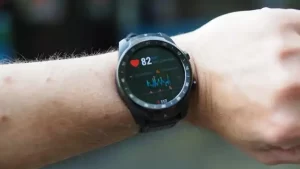Vaccine Knowledge: Actually vaccines are artificial viruses
- Aspirin: Study Finds Greater Benefits for These Colorectal Cancer Patients
- Cancer Can Occur Without Genetic Mutations?
- Statins Lower Blood Lipids: How Long is a Course?
- Warning: Smartwatch Blood Sugar Measurement Deemed Dangerous
- Mifepristone: A Safe and Effective Abortion Option Amidst Controversy
- Asbestos Detected in Buildings Damaged in Ukraine: Analyzed by Japanese Company
Vaccine Knowledge: Actually vaccines are artificial viruses
Vaccine Knowledge: Actually vaccines are artificial viruses. With the help of new technologies, vaccine development and production may be speeded up in some areas.

In the past 2020, we experienced a sudden attack of the nCOVID-19 epidemic at the beginning of the year, orderly prevention and control in various places in the middle of the year, and a small rebound in some places at the end of the year, and finally heard about the launch of the COVID-19 vaccine and the official start of vaccination before the new year of 2021. good news.
The current vaccination work is proceeding in an orderly manner, but before vaccination, there are still many questions that require popular science: which vaccine should I choose? How safe is the vaccine? Will there be adverse reactions after vaccination? It is also necessary to wear a mask and do nucleic acid testing.
The reason for these questions may be because we are still afraid of the new coronavirus, not only wanting to obtain the protection of the vaccine, but also worrying about the corresponding adverse reactions. In the foreseeable future, we will all be spent in the “accompaniment” of the virus. So, how can we eliminate the inner panic, stay away from the virus, and focus our energy on building our own order of life? There is only one answer, and that is, if we want to defeat the enemy, we must first learn to face the enemy squarely.
During the outbreak of the epidemic in early 2020, Professor Wang Liming of Zhejiang University wrote such a small book that can help you quickly understand the “enemy” and face the “enemy”-“Virus Science for Busy People”. At this stage, the answers to many questions about the COVID-19 vaccine that you most want to know can be found in this book.
How the vaccine works
The principle of action of vaccines We can understand the principle of action of vaccines from two levels.
First, in terms of the mathematical laws of infectious diseases, vaccines will not change the infection cycle of the virus, and certainly will not reduce the frequency of contact between patients and other people, but can effectively reduce the probability of spreading the disease during each contact.
If a considerable part or even all of the people contacted by the patient have been vaccinated and gained immunity, the spread of the virus will be greatly restricted. In other words, vaccinations can be seen as an upgraded version of wearing masks and washing hands frequently. The purpose is to block the spread of the virus during contact.
To understand the role of vaccines at this level, you must be able to draw a conclusion that is uncommon sense.
The use of vaccines against viral infectious diseases does not actually need vaccines to work for everyone. As long as it can protect a considerable proportion of people, it can greatly limit the spread and prevalence of diseases, and even reduce the actual number of infectious diseases R to Below 1, thereby gradually eradicating the disease.
If the basic infection number R0 of an infectious disease is 3, that is to say, during the infection period, a patient can infect 3 healthy people on average, and through vaccination, more than 2/3 of the people in the population are immune, then even Another third of people are easily infected, and the actual number of infections of this infectious disease can be reduced to less than 1. In other words, these two-thirds of people who have gained immunity through vaccination provide protection for the remaining one-third.
This is the principle of using vaccination to achieve the so-called “herd immunity”-vaccines allow most people in a group to gain immunity and indirectly protect others who cannot or are unwilling to receive vaccination.
The most typical example of this is the seasonal flu vaccine. According to statistics from the US Centers for Disease Control and Prevention, the effective rate of this type of vaccine fluctuates around 50% throughout the year, and in some years it may even be as low as ten to twenty percent (Figure 5-1). In other words, a considerable part of people who have been vaccinated against influenza have not actually gained immunity. However, governments and public health management agencies have been advising the public to actively vaccinate influenza. The reason for this is what we have just discussed. Vaccines are not only used to protect the vaccinated, it can also block the spread of the disease and indirectly protect the unvaccinated and those who cannot get immunity through the vaccine. To achieve this goal, as many people as possible need to be vaccinated.
Second, at the biological level, vaccines work by stimulating and training the body’s immune system.
Although viruses have efficient and simple invasion capabilities, the body’s defense functions are also very developed. Most of the time, the human immune system can recognize and destroy most viruses as soon as they enter the body. Even if a small number of viruses invade human cells, the human body can eliminate them in various ways, and even kill some human cells altogether, protecting itself by breaking the wrist of a strong man.
A typical example is hepatitis B. This chronic disease is caused by the hepatitis B virus invading human liver cells. But for 95% of adults, even being infected with the hepatitis B virus is not a big deal. They will experience symptoms such as fever, liver pain, loss of appetite, and nausea, but they will get better on their own after a while. In this process, the human immune system will completely remove the hepatitis B virus in the body. Not only will these people not suffer from chronic hepatitis B, but their immune system will “remember” the appearance of hepatitis B virus and gain lifelong immunity to hepatitis B virus.
The real danger is infants and young children whose immune system has not yet fully developed, as well as those adults with weak physical fitness and low resistance. After they are invaded by the hepatitis B virus, they cannot be completely eliminated in a short time due to the weak protection of the immune system. The virus causes the virus to settle deep in the cell, and it is easy to develop into chronic hepatitis B.
Respiratory infectious diseases such as influenza and new coronavirus pneumonia have similar characteristics. Even if no measures are taken, most people can rely on the function of their own immune system to get better on their own. In the new coronavirus pneumonia epidemic that began in 2019, we can also see that the vast majority of severely ill and dead patients are people who are older, suffer from underlying diseases, and are weak.
To prevent the spread of diseases, one idea is to stimulate and train the body’s immune system in advance so that it can prepare for the possible invasion of viruses. This is also the basic biological principle of vaccines.
The truth about vaccines: artificial viruses
The oldest vaccine in human history is the human pox vaccine that was invented by the Chinese and Indians about 1,000 years ago to combat smallpox virus infection. It directly uses real viruses to train the human immune system in advance.
The operation of ancient people was to make a cut on the arm of a healthy person, and then apply the virus-containing pus collected on the smallpox patient into the wound, or grind the virus-containing acne scab collected on the patient into powder. Into the nostrils of healthy people, creating a localized, small-scale, less dangerous smallpox infection.
After these smallpox viruses enter the wound, they will be recognized by the body’s immune system, and then there will be a large number of various immune cells to besiege and destroy them. Because the virus is confined to a small area of the wound, the probability of causing systemic infection is not high, and the number is limited, so it is easier to be eliminated.
More importantly, in this process, the body’s immune system can form an “immune memory” of these invading viruses. Specifically, after the battle of the immune system is completed, the human body will reserve a small batch of immune cells that can recognize the variola virus. In this way, when the truly dangerous smallpox pandemic begins, because the immune cells in these people’s bodies have been stimulated and trained in advance, they can sound the alarm at the first time, resist virus invasion, and prevent the virus from in the body. Reproduce to the point where it is difficult to manage. Such immune cells can even exist in the human body for life.
Of course, the operation of using real viruses as vaccines to train the immune system is still very risky. In the practice of human pox vaccine carried out by ancient people, about 2% of people will die from severe infection with smallpox virus. Although this ratio is far lower than the 30% death rate caused by the smallpox pandemic, it obviously also greatly limits the promotion of similar vaccines. In times of peace in the world, people are likely to refuse to receive this smallpox vaccine because they are afraid of a 2% mortality rate, and it will be too late to vaccinate when the pandemic really begins.
In modern times, mankind has invented many other vaccine manufacturing methods to replace real viruses.
Our common vaccines are actually artificially manufactured fake viruses, or rather, artificially modified viruses that have lost their serious pathogenicity. They have been artificially removed the part of the virus that can cause disease and retain other parts that are similar to the real virus. Such vaccines can also stimulate the body’s immune memory when entering the human body, thereby preparing for the prevention of real virus invasion.
So how are these fake viruses made?
Two long-established methods of making vaccines are attenuated vaccines and inactivated vaccines.
The so-called “attenuated vaccine” refers to some weakly toxic virus strains discovered by scientists in the process of long-term cultivation and screening of viruses in the laboratory. These viruses are still alive, and they can also invade cells and stimulate an immune response after entering the human body. However, since the viruses selected are less toxic, their probability of causing disease will be greatly reduced. In this way, people who have been vaccinated with these attenuated vaccines are equivalent to a mild viral infection in exchange for resistance to serious infectious diseases.
The mumps vaccine, chickenpox vaccine, Japanese encephalitis vaccine and so on that the children now receive are all attenuated vaccines. The “sugar pill” for polio, which was once promoted on a large scale but has now been basically eliminated, is also an attenuated vaccine.
So far, the attenuated vaccine is the most effective type of vaccine invented by mankind. The fake virus injected into the human body is almost the same as the real dangerous virus. They are very similar in the way they invade cells, their ability to replicate themselves, and their shape and structure. Therefore, they can stimulate the most “original” immune response.
Of course, the attenuated vaccine also has its problems.
These live viruses will continue to replicate and mutate. If they mutate and produce strong toxicity, it will be very troublesome. The “sugar pill” of polio, which has now been eliminated, is likely to make a child really suffer from polio, but this probability is very low.
In contrast, the advantages and disadvantages of inactivated vaccines are the opposite of attenuated vaccines.
The so-called “inactivated vaccine” is commonly understood as killing and destroying the true virus by chemical or physical methods, and then injecting it into the human body. The dead virus that enters the human body has no ability to reproduce and invade human cells. It is only similar to the real virus in structural features, but it can also make the human body form immune memory. This treatment method determines that the risk of inactivated vaccines is small, but at the same time the immune effect will be worse. Sometimes it takes several shots to be effective because they are not real viruses after all. The polio vaccine, influenza vaccine and hepatitis A vaccine that we are now widely used are all inactivated vaccines.
For the human world, the role of vaccines cannot be overemphasized.
Smallpox killed more than 300 million people in the 20th century alone, but with the help of the smallpox vaccine, this disease has been completely eliminated by humans. Poliomyelitis, which has led to the paralysis and death of countless children, had fewer than 30 cases in Afghanistan and Pakistan by 2018.
In some countries, the free vaccination of hepatitis B vaccine has reduced the infection rate of children with hepatitis B virus from 10% to 0.32%. We will take off the “hepatitis B country” in one or two generations. Although the effectiveness of the flu vaccine is not satisfactory, it also greatly reduces the average mortality caused by the flu.
Whether it is to produce attenuated vaccines or inactivated vaccines, it is necessary to cultivate a particularly large number of viruses in laboratories and factories. And this often becomes the biggest limiting factor in vaccine production and promotion-not only the production capacity of factories cannot keep up, but even factories with virus cultivation qualifications themselves are scarce resources.
Take the influenza vaccine that must be re-developed and produced every year. In February of each year, the World Health Organization announces its forecast of the influenza epidemic that year. After that, countries in the northern hemisphere will begin to produce vaccines. This process often lasts 5 to 6 months, so that enough vaccine injections can be stored before winter in the northern hemisphere. And if the prediction is biased and the protective effect of the hard-prepared vaccine is not satisfactory, we will not have time to prepare a new vaccine.
For many sudden outbreaks of viral infectious diseases, in addition to production, the pre-vaccine development link also takes a long time, which leaves humans with insufficient reaction time to develop and produce vaccines. In many cases, even the epidemic has disappeared, and the vaccine is still in the development stage. This was the situation in the development of the SARS vaccine that year. In the 2019 outbreak of the new coronavirus pneumonia, in the face of the eager expectations of the public, experts from various countries have repeatedly emphasized that even if the vaccine development is smooth, it will take 1 to 1.5 years to complete all the necessary tests.
How to speed up the development and production of vaccines
Is there any way to speed up the pace of vaccine development and production?
With the help of new technologies, vaccine development and production may be speeded up in some areas.
According to the logic of the development of attenuated vaccines and inactivated vaccines, you should be able to think of another idea, which is to simply use only a part of the virus, such as the protein coat, or even just a protein molecule on the protein coat. Can it be similar? The role of fake viruses and dead viruses stimulate the body’s immune response? Using molecular biology techniques that have emerged in recent decades, it is much less difficult to produce a protein molecule in laboratories and factories than to breed viruses.
The hepatitis B vaccine widely used now is just such a vaccine. People produce a certain protein (S protein) of the hepatitis B virus in the laboratory, with various other ingredients that can stimulate an immune response, and then they can be injected directly into people.
In recent years, there has even been a seemingly simpler method-directly injecting a piece of viral DNA or RNA into the human body as a vaccine. After these nucleic acids enter human cells, they can instruct human cells to produce a certain protein on the virus. This is equivalent to omitting the protein production step.
These new methods may indeed help us greatly increase the speed of vaccine development and production. According to the pioneer of RNA vaccines—Moderna, USA, their RNA vaccines can be developed within 4 months. As of March 2020, for the new coronavirus, the RNA vaccine developed by Moderna in the United States and the recombinant adenovirus vector vaccine developed by Chinese scientists have officially entered the clinical trial stage, and more vaccines are also in the development process. As of the end of 2020, a number of new coronavirus vaccines have ended clinical trials and will enter the mass vaccination phase at any time. In the face of the crisis, the speed of human vaccine research and development is unprecedented.
But must emphasize here that the vaccine development and production process may be accelerated, but some links cannot be omitted in any case.
The most time-consuming and resource consuming of all the links is the large-scale human clinical trials of the new vaccine. No matter how urgent people are for new vaccines, this step cannot be omitted.
The reason is also easy to understand. The purpose of vaccinating healthy people is of course to protect them from infectious diseases and to help humans cope with the pandemic of infectious diseases. That being the case, we have to make sure that the vaccines given can produce tangible protective effects, not just psychological comfort. Moreover, no matter how legitimate the purpose of vaccination, we all have to ensure the safety of the vaccine first, so as not to pose a serious threat to the otherwise healthy people. Therefore, it is essential to conduct extensive human trials to ensure the effectiveness and safety of the vaccine before it is officially promoted and used.
The human clinical trial process of vaccines is not the same logically compared with the corresponding process of general drug development.
Every new drug needs to go through rigorous clinical trials before being marketed. The basic logic of this process is to conduct a large-sample randomized controlled double-blind experiment: randomly divide a group of eligible patients into two groups, one group with medication and the other with placebo, and after a period of time, compare the differences between the two groups. In this process, neither the patient nor the doctor understands the grouping situation. This is to eliminate the interference of psychological factors.
But clinical trials of vaccines are different: it cannot be tested on patients because the role of vaccines is to protect healthy people from getting sick. In order to test the effectiveness of the vaccine, researchers cannot directly expose healthy people to the virus after vaccinating them. This is not in line with basic medical ethics.
The usual practice when conducting clinical trials of vaccines is to select a large number of healthy people in areas where the disease is prevalent, and vaccinate them or fake vaccines that act as placebos. Because the virus is spreading everywhere, after a period of time, some people will always be exposed to the attack of the virus and become infected. At this time, the researcher can compare the probability of the two groups being infected by the virus. It is conceivable that such a test method requires tens of thousands of people to participate-after all, no matter how popular the virus is, only a small percentage of people will actually be infected.
The Ebola virus vaccine Ervebo, which was just approved at the end of 2019, has become a vaccine directly under the guidance and rapid approval of the World Health Organization because of its great public health value. What few people know is that it took a full 15 years from the establishment of the project to the market. During the 2014-2016 Ebola pandemic in West Africa, it was tested by more than 3,000 subjects and proved that it was sufficiently safe. At the same time, it can also provide people with protection against the Ebola virus before it was finally approved for listing.
In the foreseeable future, the application of new technologies will certainly shorten the cycle from vaccine research and development to widespread promotion. But we also need to bear in mind that the scientific rules in the vaccine development process should not interfere with the normal rhythm of vaccine development due to urgent needs.
Because of being too impatient, humans have indeed suffered a great loss.
In 1955, the first batch of polio vaccines developed and produced in the United States was not thoroughly inactivated, which resulted in many children being vaccinated with live poliovirus. After the large-scale promotion, about 40,000 children suffered from polio, more than 200 were paralyzed for life, and 10 died unfortunately.
Vaccine Knowledge: Actually vaccines are artificial viruses. With the help of new technologies, vaccine development and production may be speeded up in some areas.
(source:internet, reference only)
Disclaimer of medicaltrend.org



